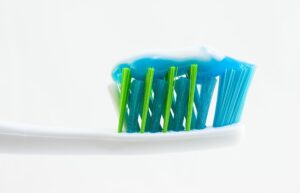Fluoride
Fluoride is an element that is found naturally occurring in drinking water or may be added into drinking water supplies as a public health measure to reduce the risk of cavities. The level of fluoride in drinking water has been of concern as excess fluoride has been associated with fluorosis (mottling and pitting of tooth enamel), bone fractures and skeletal fluorosis, a painful and sometimes crippling condition. There may also be a link between fluoride exposure and osteosarcoma (bone cancer), neurotoxicity and disruption of thyroid function.
Fluoride Exposure
The U.S began adding Fluoride to drinking water in the 1940’s after it was learned that Fluoride reduces cavities. However, today we are exposed to Fluoride in numerous ways and some say that the added fluoride in drinking water is not necessary as fluoride does have negative health effects in high amounts. Many countries do not fluoridate their water. The EPA set a maximum standard for fluoride allowed in drinking water at 4.0 mg/L. They have set a secondary standard for children at 2.0 mg/L. Some groundwater can already have high levels of fluoride and is used as tap water in some communities.

We are exposed to fluoride through toothpaste, many dental implants and fillings, floss, mouthwash, food, etc. Bottled water is not exempt from fluoridation as much of bottled water comes from municipal tap water. The FDA has set a limit for the maximum added fluoride in bottled water at 2.4 mg/L for water that previously had no fluoride added and 1.7 mg/L for water with fluoride already present.
Health Effects of Fluoride
Many health effects of fluoride are still debated. Fluorosis (mottling and pitting of tooth enamel) is the main health impact of overexposure to fluoride. Skeletal fluorosis and bone weakening is also an effect. Some studies have shown that prenatal fluoride exposure has led to lower IQ in children. It is still unclear on whether fluoride is linked to cancer.

Reducing Fluoride Exposure
There are a number of ways you can reduce your fluoride exposure. To see the amount of fluoride in your city’s water go to CDC- My Water’s Fluoride. The Environmental Working Group recommends that you follow these guidelines to reduce fluoride exposure:
- Filter your tap water using a reverse osmosis filter
- Use fluoride free water for infant formula
- For children under 2, use fluoride-free toothpaste and for children under 6 use “child-strength” toothpaste
- Avoid pet food with bonemeal and byproduct

For more information: EPA Fluoride Questions and Answers
